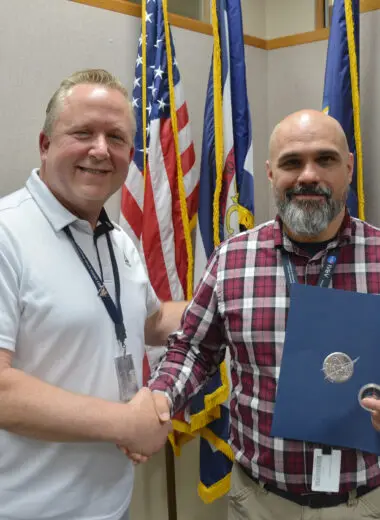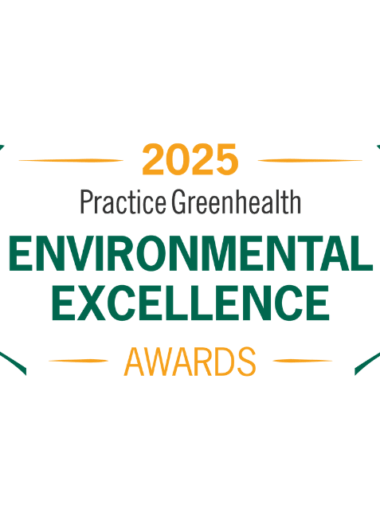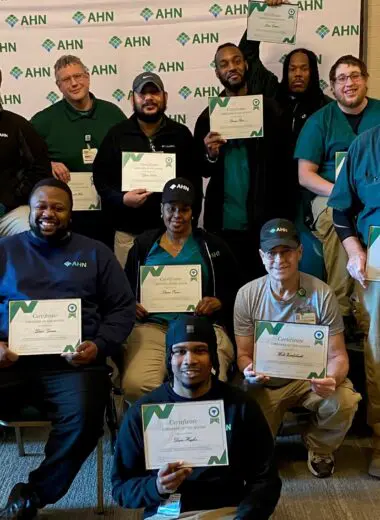Two Compass Group companies are working together to prepare schools across the nation for a safe re-opening. Seth Ferriell, Chief Executive Officer of SSC, Services for Education, which provides cleaning, grounds, and maintenance services for 125 schools and universities, and Rich Feczko...
Two Compass Group companies are working together to prepare schools across the nation for a safe re-opening. Seth Ferriell, Chief Executive Officer of SSC, Services for Education, which provides cleaning, grounds, and maintenance services for 125 schools and universities, and Rich Feczko, Crothall Healthcare’s National Director of Systems, Standards, Innovation and Global Support, discuss changes they are making to ensure schools have a safe environment this fall in this podcast by Envision Group. Below, we’ve transcribed the podcast:
Q: Describe how your businesses share expertise about cleaning solutions to benefit our clients.
Seth: There are a lot of synergies between education and healthcare. For 10 years, we’ve worked together reviewing products and equipment to make our institutions cleaner and safer. There’s a lot of overlap in keeping patients, faculty and students safe.
Rich: We share information and results about the impact of our products and technology and examine how this information can be applied to schools. This work includes applying and executing the best disinfectants and technology – the best solutions we have to make our facilities safe.
Q. What is the cleaning checklist for re-opening schools around the nation?
Seth: People have been inundated with guidelines and recommendations from a variety of sources, including the Centers for Disease Control, state and local government and school officials. Sometimes the information is both generic and overwhelming.
What’s needed is information that is specific to each school or university. And how will it apply to different buildings and spaces, including the café, library or classroom. We’re also making sure that our supply chain is meeting the needs of each institution to carry out their plans. We began ordering supplies back in February and have stockpiled Personal Protective Equipment (PPE) and other supplies to make sure we have enough equipment.
Finally, we need robust communications. Transparency is really important. We are encouraging our clients to publish on their websites their safety plan to sanitize and keep their facilities clean. Parents, students, faculty and administrators need to understand what is going on in their buildings, when everything will be disinfected and how we can verify every place is clean.
Rich: That’s where the disinfection processes and associate training programs we use in hospitals can be applied to cleaning our schools. The foundation is hand hygiene. While we’ve all heard repeatedly about the importance of hand hygiene since the pandemic was discovered, it’s a staple of our cleaning process and can’t be overemphasized.
Our people are also trained to apply the right disinfectants for the right job. We’re also able to quickly measure – often within 30 seconds – if our cleaning process and product has actually disinfected a surface. In hospitals, these are high-touch surfaces, such as bed rails, in patient rooms; in schools and campuses, it’s railings, doorknobs, Automated Teller Machines (ATMs).
To ensure our cleaning methods work, we also use a product called Adenosine triphosphate or ATP testing to measure whether our disinfectants are efficient. Our testing at several hospitals has achieved double-digit decreases in a variety of pathogens.
Q. How will schools change to make sure everyone is safe?
Seth: We’ll do a lot for K-12 schools to minimize personal contact. Library books, breakfast and lunch will be delivered to the classrooms. There won’t be community gathering spots; gym classes will be smaller, and kids will be spread out on the school bus.
We’ve also been working with schools this summer to remove bookshelves and play areas so desks can be spread further apart. In colleges and universities, it’s a bit harder because high-touch areas such as dormitories and athletic facilities have a population density that’s hard to avoid.
Unfortunately, most of the changes will increase expenses. And most schools are state-funded and facing budgets that are constrained. But bottom line, we are helping the clients make the students feel safe. And parents must feel that their kids are safe.
Rich: We vet and analyze a variety of technologies that can eliminate pathogens and make rooms and buildings safe. Seth just mentioned shortwave ultraviolet light. We were the first healthcare support services company in the nation to begin this technology back in 2007. It can destroy pathogens in medical intensive care units and other areas of a hospital when manual disinfection techniques aren’t enough.
We believe there are opportunities to apply this technology in education facilities, such as athletic team locker rooms and public restrooms. And because we’ve used it for 13 years, its effectiveness in driving down disease and pathogens has been validated. It’s one more tool that allows everyone to work, play and study in a safe environment.
Q. How will our role change in the foreseeable future?
Seth: Cleaning and disinfecting schools and other facilities will take on a more important role. There’s a heightened awareness of the cleanliness of buildings and protecting people from getting COVID-19, and it will continue to be a top priority over the next two or three years.
Again, we’re fortunate that we can rely on Crothall and Rich’s team for solutions. Infection control never lets up for them. They’ve been fighting MRSA, HAIs and other diseases for a long time. For us, it’s valuable to be able to tack into their knowledge and work side-by-side to provide value to our clients.
Rich: The mitigation strategies and tactics we use in a hospital’s clinical areas are being expanded to other parts of the hospital, such as lobbies, emergency department waiting areas and public restrooms. The same thing will occur in education buildings. There will be an elevated focus on entrance areas, doorknobs, restrooms and locker rooms.
Every single client needs to know their facilities are safe. Our approach to our deep cleaning techniques, use of the right products and application of technology will be critical in our approach.
Related Posts
Let’s Talk About the Right Solution for Your Organization
Get in touch to discuss how Crothall Healthcare’s services and solutions can help your healthcare organization exceed its goals. You’ll learn more about:
- The transparency we bring to outsourced support services
- How we design customized solutions for your unique needs
- The technology and innovation Crothall delivers across all our services





